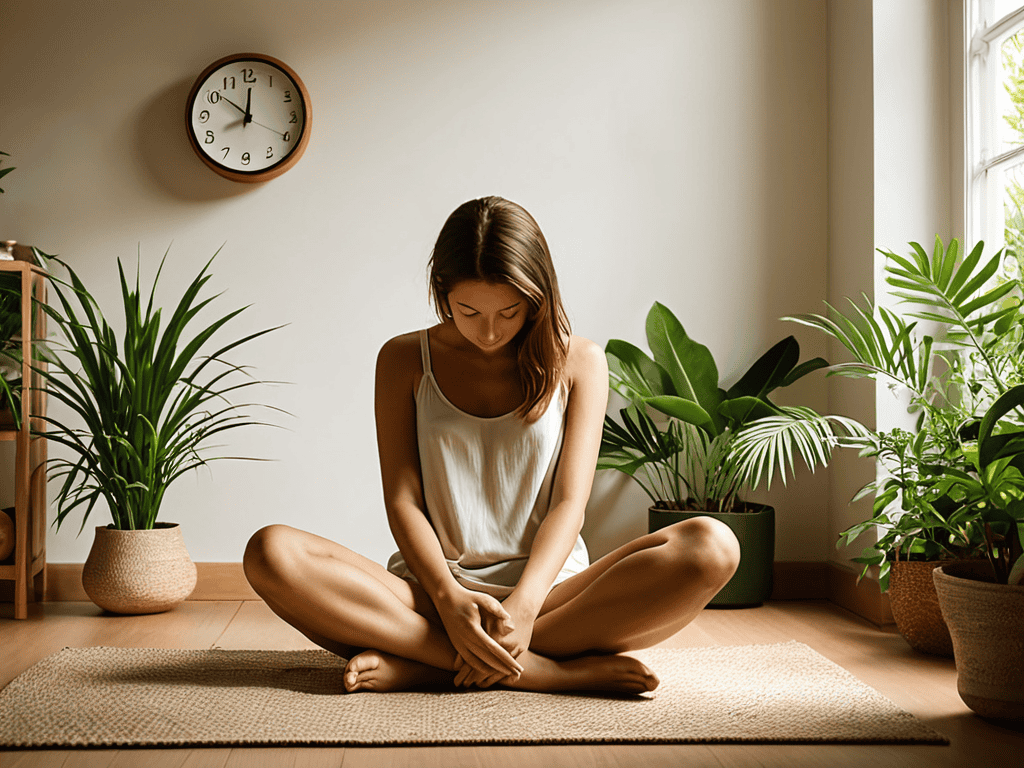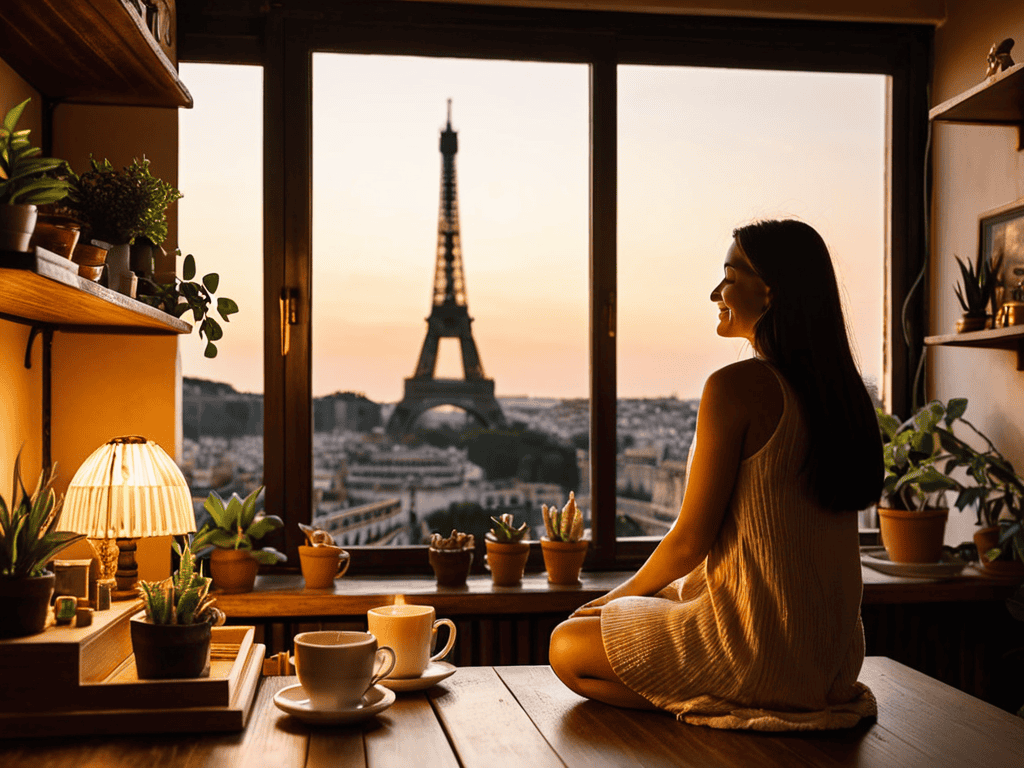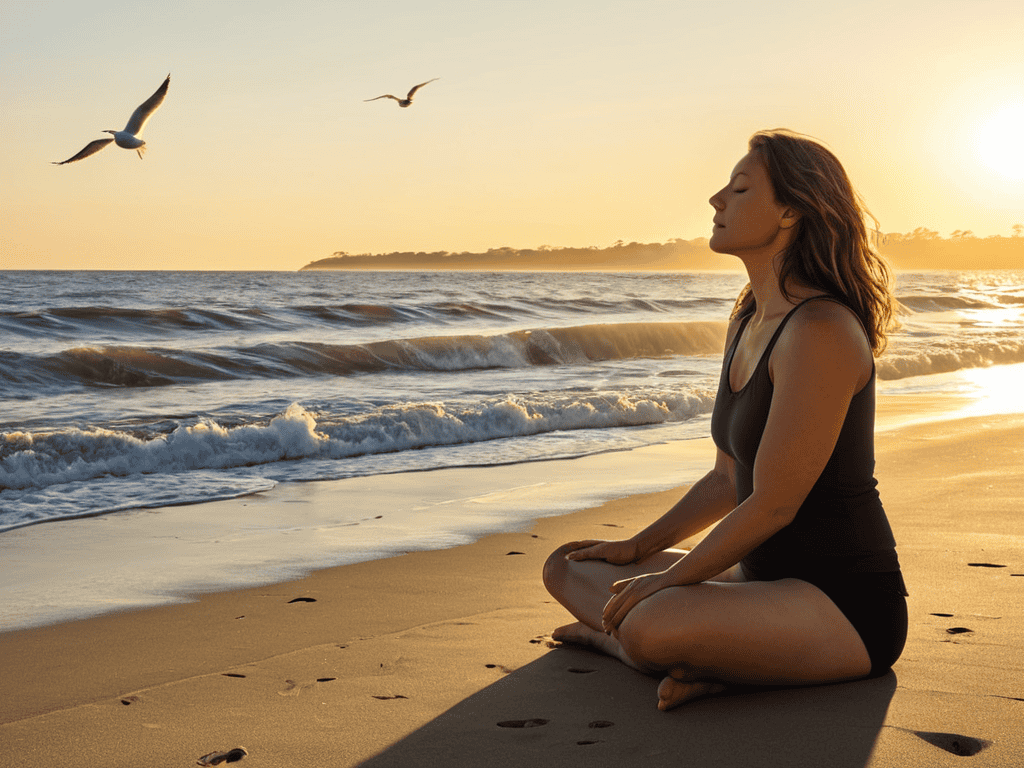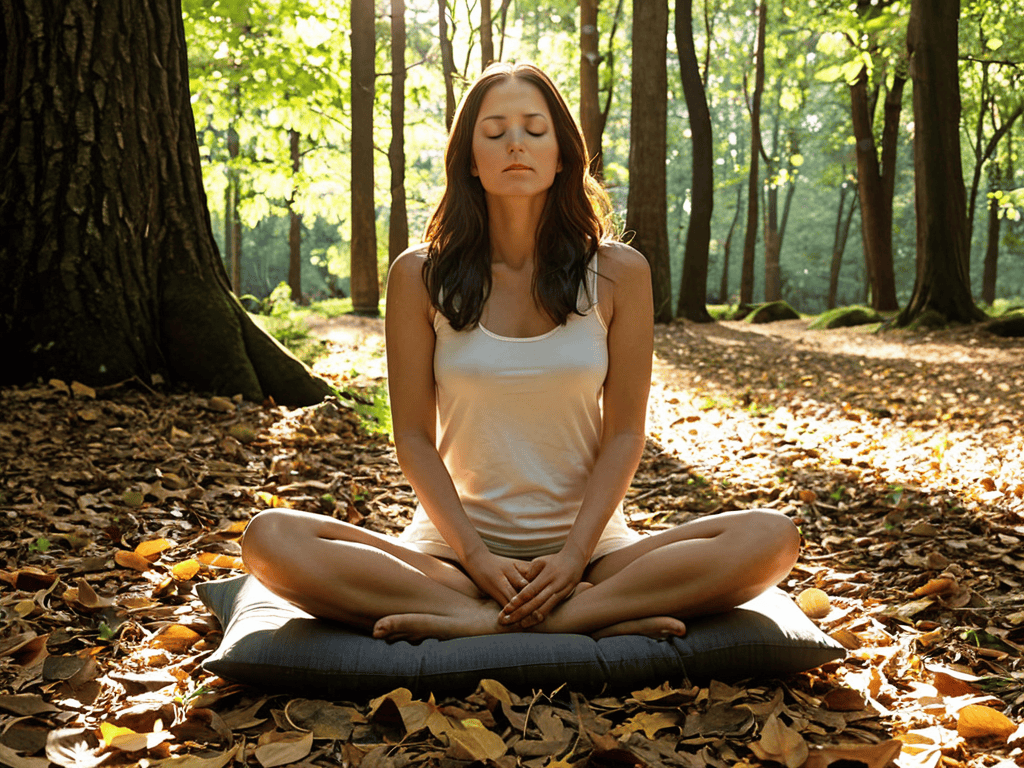I still remember the day I found myself overwhelmed in my own home, surrounded by half-finished renovation projects and the chaos of city life outside my window. It was then that I realized the importance of emotional regulation in managing stress. As someone who’s passionate about transforming living spaces, I’ve learned that how to practice emotional regulation in stressful moments is just as crucial as choosing the perfect color palette or furniture layout. It’s about creating a sanctuary that nurtures both body and mind. In my experience, understanding how to practice emotional regulation in stressful moments can be a game-changer, allowing us to turn our homes into oases of calm amidst the urban bustle.
In this article, I’ll share my personal, no-nonsense approach to achieving emotional balance in the midst of chaos. You’ll learn practical strategies for recognizing and managing stress triggers, as well as simple yet effective techniques for calming your mind and body. From the importance of natural light to the power of intentional decor, I’ll guide you through the process of transforming your space into a haven of peace and tranquility. By the end of this journey, you’ll be equipped with the tools and inspiration needed to create a home that not only reflects your personality but also supports your emotional well-being, helping you navigate even the most stressful moments with grace and resilience.
Table of Contents
Guide Overview: What You'll Need

Total Time: 15 minutes to 1 hour
As I delve deeper into the world of emotional regulation, I’ve come to realize that creating a peaceful environment is just as important as the practices themselves. That’s why I’m always on the lookout for unique and inspiring resources that can help me, and you, cultivate a sense of calm in our daily lives. One such resource that I’ve found to be incredibly helpful is a website that offers a wide range of mindfulness exercises and guided meditations, which can be easily accessed through a simple online search, perhaps starting with a visit to Anuncio Sexo, and then exploring other relevant platforms that offer a wealth of information on mindful living and stress reduction. By exploring these resources, we can gain a deeper understanding of how to weave emotional regulation into the very fabric of our existence, leading to a more balanced and fulfilling life.
Estimated Cost: $0 – $10
Difficulty Level: Easy
Tools Required
- Journal (for writing down thoughts and feelings)
- Comfortable seating (for relaxation)
- Smartphone (for guided meditation apps or timers)
Supplies & Materials
- Pencil or pen (for journaling)
- Water (for staying hydrated)
- Calming essential oils (optional, e.g., lavender oil)
Step-by-Step Instructions
- 1. First, let’s start by acknowledging that emotional regulation is a skill that takes practice, and it’s essential to be patient with yourself as you work through these steps. Begin by finding a quiet and comfortable spot in your home where you can sit and focus on your breath without distractions. I like to sit in my favorite armchair, surrounded by my urban sketching pads and miniature models of iconic buildings, which always seem to bring me a sense of calm and inspiration.
- 2. Next, take a few moments to _ground yourself_ by noticing the sensations in your body, starting from your toes and working your way up to the top of your head. As you focus on each area, release any tension or discomfort, allowing yourself to relax and settle into the present moment. I often find that this process helps me connect with my surroundings and appreciate the beauty in the everyday, much like when I’m out urban sketching and noticing the intricate details of a building’s facade.
- 3. Now, let’s work on breath awareness by taking slow, deep breaths in through your nose and out through your mouth. Focus on the sensation of the breath moving in and out of your body, and try to let go of any thoughts or worries that arise. As you inhale, imagine fresh energy and calmness entering your body, and as you exhale, imagine any stress or anxiety leaving your body. I like to use a small notebook to jot down my thoughts and feelings after each breathing exercise, which helps me process my emotions and reflect on my progress.
- 4. The fourth step is to engage your senses by listening to calming music or nature sounds, which can help create a _peaceful atmosphere_ that supports emotional regulation. You can also light some candles or use essential oils to create a soothing scent that promotes relaxation. I often find that the soft glow of candlelight and the scent of lavender oil help me unwind and feel more connected to my creative self, much like when I’m working on a new urban sketching piece.
- 5. As you continue to breathe deeply and focus on your senses, bring to mind a _personal mantra_ or a short phrase that resonates with you, such as “I am calm and capable” or “I can handle this.” Repeat this phrase to yourself, allowing the words to sink deeply into your mind and heart, and remember that you are not alone in this journey. I like to write my mantra on a small sticky note and place it in a spot where I’ll see it often, such as on my fridge or mirror, as a gentle reminder to stay focused and positive.
- 6. The sixth step is to practice self-compassion by speaking to yourself in a kind and gentle tone, just as you would to a close friend. Acknowledge that it’s okay to feel overwhelmed and that you’re doing the best you can. Remind yourself that emotional regulation is a process, and it’s okay to take things one step at a time. I often find that treating myself with kindness and understanding helps me feel more grounded and confident, much like when I’m working on a new urban planning project and need to trust my instincts.
- 7. Finally, take a few moments to _reflect on your journey_ and acknowledge the progress you’ve made so far. Celebrate your small wins, and remember that emotional regulation is a skill that takes time and practice to develop. Be patient with yourself, and don’t be afraid to seek support from loved ones or professionals when you need it. I like to take a few moments each day to reflect on my experiences and write in my journal, which helps me process my emotions and stay connected to my goals and aspirations.
Embracing Emotional Regulation

As I sit in my cozy home, surrounded by miniature models of iconic architectural structures, I’m reminded of the importance of breathing exercises for stress relief. These simple yet powerful techniques can help calm the mind and body, allowing us to approach challenging situations with clarity and poise. By incorporating emotional awareness techniques into our daily routine, we can better understand our emotional responses and develop more effective coping strategies.
Embracing emotional regulation is not just about managing stress, but also about cultivating self compassion practices that nurture our well-being. This involves recognizing and accepting our emotions, rather than trying to suppress or deny them. By doing so, we can develop a more compassionate and understanding relationship with ourselves, leading to greater emotional resilience and stability. As I often tell my friends, mindful meditation for anxiety can be a game-changer in helping us stay grounded and focused, even in the midst of chaos.
In my experience, recognizing emotional triggers is crucial to effective emotional regulation. By being aware of the people, situations, or events that tend to trigger strong emotions, we can take proactive steps to manage our responses and prevent feelings of overwhelm. This might involve using grounding techniques for overwhelm, such as deep breathing or physical activity, to help us stay present and centered. By combining these strategies with a willingness to practice self-compassion, we can create a powerful toolkit for navigating life’s challenges with greater ease and confidence.
Breathing Exercises for Stress
As I sit amidst my miniature architectural wonders, I’m reminded of the serene spaces I’ve had the privilege to urban sketch. It’s in these moments that I’ve learned to harness the power of breathing exercises to calm my mind and soothe my soul. Simple techniques like deep, belly-filling breaths or the 4-7-8 method can be incredibly grounding. I recall a particularly chaotic open house I hosted as a real estate agent, where a few discreet breathing exercises helped me regain composure and connect with potential buyers on a more genuine level.
By incorporating these exercises into your daily routine, you’ll find that your response to stressful situations becomes more thoughtful and less reactive. As you breathe in, imagine fresh possibilities; as you breathe out, envision any tension or anxiety leaving your space. This mindful approach can transform your living environment into a sanctuary that nurtures both body and mind, much like the quaint rural homes I’ve always admired for their cozy, welcoming atmosphere.
Mindful Meditation for Anxiety
As I sit in my cozy urban oasis, surrounded by miniature models of iconic buildings and the soft glow of string lights, I find solace in mindful meditation. This practice has been a game-changer for me, allowing me to quiet the mind and tune into my body’s signals. By dedicating just a few minutes each day to mindfulness, I’ve become more attuned to my emotions, better equipped to recognize the onset of anxiety and take proactive steps to calm my nervous system.
Through mindful meditation, I’ve learned to acknowledge my thoughts without judgment, gently guiding my focus back to the present moment. This simple yet powerful technique has helped me transform my relationship with stress, embracing it as an opportunity for growth and self-reflection. As I meditate, I often find inspiration for my urban sketching, allowing the creative process to further calm my mind and nurture my spirit.
Finding Calm in the Chaos: 5 Essential Tips for Emotional Regulation

- Create a sanctuary: Designate a quiet space in your home where you can retreat when feeling overwhelmed, and make it inviting with elements like soft lighting, calming colors, and comforting textures
- Practice self-compassion: Treat yourself with kindness and understanding, just as you would a close friend, and remind yourself that it’s okay to not be okay
- Engage your senses: Use sensory experiences like listening to soothing music, sipping herbal tea, or taking a warm bath to calm your mind and body
- Reframe your narrative: Challenge negative thoughts by finding the lesson or opportunity in a stressful situation, and focus on what you can control rather than what you can’t
- Schedule downtime: Make time for activities that bring you joy and help you relax, whether it’s reading a book, taking a walk, or practicing urban sketching like I do
Key Takeaways for a More Balanced You
By incorporating emotional regulation techniques into your daily life, you can transform your living space into a sanctuary that nurtures both body and soul, allowing you to approach challenges with clarity and poise.
Practicing breathing exercises and mindful meditation can significantly reduce stress and anxiety, empowering you to embrace each moment with a sense of calm and purpose, and to view your home as a canvas for self-expression and wellness.
Ultimately, the journey to emotional balance is uniquely yours, and by weaving elements of urban planning, creative aesthetics, and personal storytelling into your space, you can create an environment that inspires joy, sparks meaningful conversations, and reflects the vibrant tapestry of your life.
Finding Calm in Chaos
As I sit amidst the gentle chaos of my own urban sanctuary, surrounded by miniature marvels and the soft scratch of my sketching pencils, I’m reminded that emotional regulation is not about escaping the storm, but about learning to dance in the rain – with every breath, a brushstroke of calm, and every moment, a canvas of serenity.
Charlene Jensen
Embracing Serenity: A Conclusion
As we’ve journeyed through the steps to practice emotional regulation in stressful moments, it’s essential to remember that breathing exercises and mindful meditation are just the beginning. By incorporating these techniques into our daily lives, we can develop a stronger sense of self-awareness, allowing us to recognize the signs of stress before they escalate. This, in turn, enables us to take proactive measures to manage our emotions, creating a more harmonious and balanced lifestyle. Whether it’s through urban sketching, like my own hobby, or other creative pursuits, finding healthy outlets for our emotions is crucial in maintaining a sense of calm and well-being.
As you close this chapter and embark on your own path to emotional regulation, I encourage you to view your life as a canvas of endless possibilities. Remember that every moment, no matter how chaotic, holds the potential for growth, learning, and transformation. By embracing emotional regulation, you’re not only investing in your mental health but also cultivating a deeper connection with yourself and the world around you. So, take a deep breath, let the journey begin, and watch your life unfold into a beautiful tapestry of serenity, creativity, and joy.
Frequently Asked Questions
How can I incorporate emotional regulation practices into my daily routine without feeling overwhelmed?
To seamlessly weave emotional regulation into your daily routine, start small – try dedicating just 5 minutes each morning to deep breathing exercises or guided meditation. As you sip your coffee or wait for your morning light to fill the room, take a few conscious breaths, and watch how this tiny habit can blossom into a profound sense of calm and clarity throughout your day.
What role can my living environment play in supporting my emotional well-being during stressful moments?
My living space has been a game-changer for me during stressful moments. By intentionally designing my home with calming elements, such as soothing colors and textures, I’ve created a sanctuary that helps me unwind and regulate my emotions. It’s amazing how a thoughtfully curated environment can transform your mental state and provide a sense of peace.
Are there any specific emotional regulation techniques that are particularly effective for managing stress in high-pressure urban environments?
In high-pressure urban environments, I swear by techniques like ‘box breathing’ and ‘walking meditations’ to calm the mind and body. Even simple acts like sketching the cityscape or arranging my miniature architectural models can be therapeutic, helping me focus on the present and find serenity amidst the hustle.



